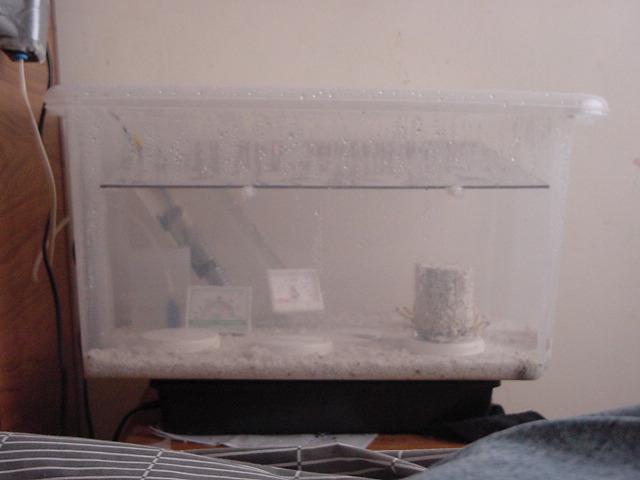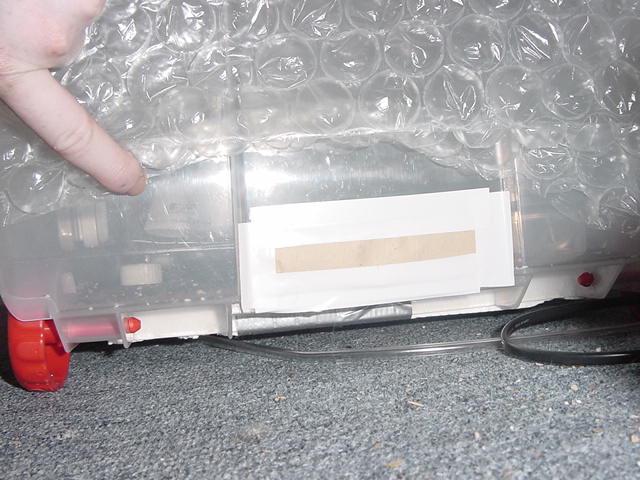A PF style Birthing Chamber 
This is an example of a birthing chamber for PF style brf cakes.
This type of container is widely available at DIY shops.
The chamber is sat on top of a propogator heating box filled with damp sand to aid in heat transfer. Other examples of heating elements are a heating pad that is used for heating reptile tanks and are available in most pet shops, wired through a dimmer switch to offer control over the out put of the pad, or via a timer switch set to come on for a set period a number of times a day. This method requires a lot of trial and error to monitor the temperature and work out the best scheduling.
Digital hygro/thermometers are not recommended for long periods of time inside the chamber as the high humidity will short out componenets in the meter and render the thermometer useless. Use for a couple of hours at a time or buy an analogue meter.
Heating via a lamp placed on top of the chamber (but this is difficult to regulate). Via a fish tank heater which can be placed in a container of water. Aquarium heaters also offer a good source of humidity but are not suitable for heating chambers of any size.
Perlit is used on the bottom of the chamber with water as an added source of providing humidity but is not essential. Perlite/water is an excellent source of humidity when used in conjunction with heat pads or other heat sources which heat from underneath as this heats the water (providing a humid atmosphere) as well as the tank.
Humidity can be provided by hand misting with a spray bottle several times a day but it is advisable to use a 'drip-shield' as shown in the picture, which is basically a sheet of perspex mounted at an angle so that any condensation runs down the shield rather than dropping directly on the cakes.
Also in the top right of the picture is a small aquarium pump which pumps air through a tube and into the container via a beaker of water. This again is an excellent source of providing humidity plus providing an air exchange which reduces the need to 'fan' the chamber by hand with a piece of cardboard every couple of hours to expel any Carbon Dioxide that has gathered in the bottom of the chamber which is given off by the mycelium/mushrooms during growth. If using a pump to provide air exchange it is advisable to drill a few holes just above the perlite layer and cover with a coffee filter paper to add some protection from contaminents in the room. These holes provide an 'exhaust' for carbon dioxide to be expelled when the fresh air is introduced to the chamber.
Any one of the above methods will probably be sufficient on its own to provide close to 100% humidity but have pictured a set-up incorperating most of the common elements found in birthing chambers.  *NB
Reptile heating pads are not ideal for use with a Perlite setup as they have to be mounted externally due to electric shock hazard with H20 |

